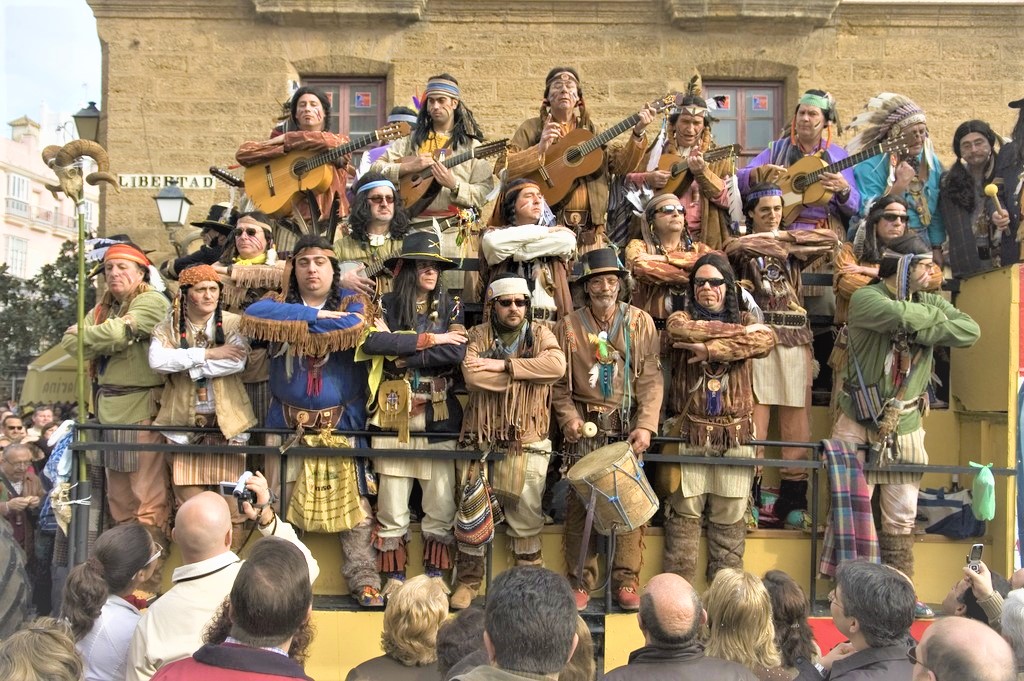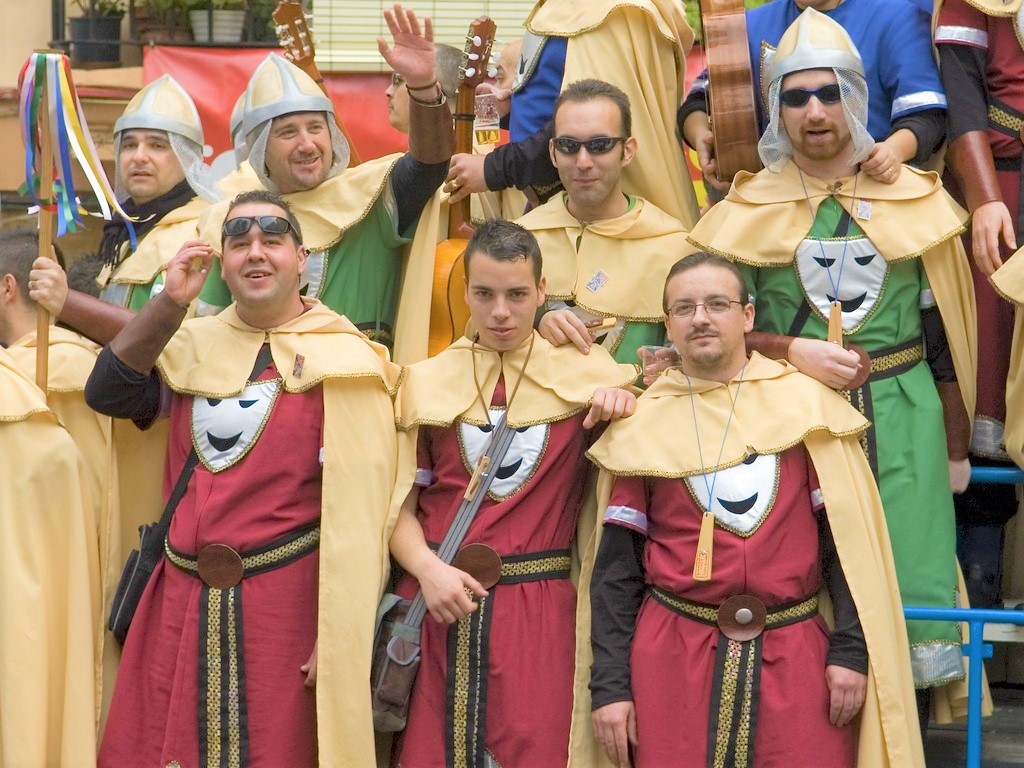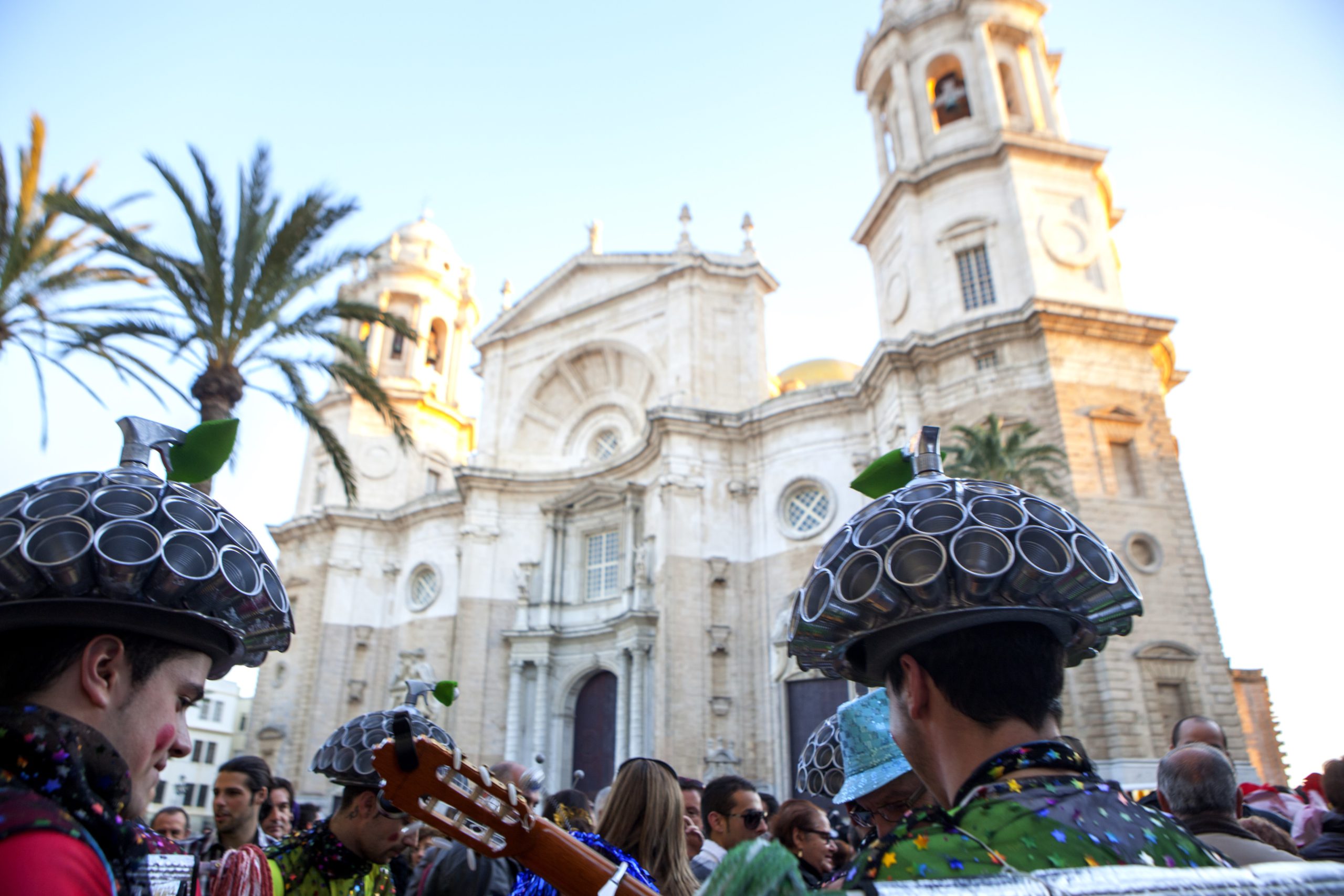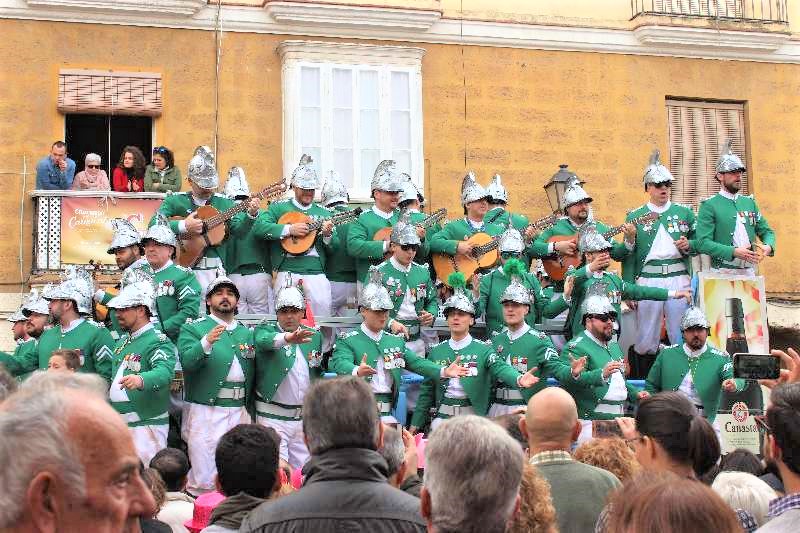Carnival of Cádiz
The Carnival in Cádiz is a “total social festival”. It encompasses all dimensions of social life of people and is ithe city’s main symbol of collective identification. Much of the city’s life revolves around the carnival which, although it has an official staging period during one week in February, lasts practically all year round, especially from the very moment Christmas ends.
Most of the people of Cádiz participate in one way or another in this festivity with so many ritual spaces and times linked to it. It structures the vital, working and social order of the city of Cádiz.
The origin of this festive tradition dates back to the 17th century, and in the following centuries the Carnival model existing nowadays would be generated. The first references to carnival associations date back to the thirties of the 19th century. In 1862 it became part of the municipal festive calendar. In 1884 the first official and regulated carnival groups arised: coros (choirs), chirigotas, comparsas (troupes) and cuartetos (quartets).
The carnival of Cádiz is always a dynamic and changing event, a brilliant example of the collective creativity of these groups of people. The composition of these groups is informal, unregulated and can be changed every year. The musicality, versatility and ingenuity of their compositions stand out. Their lyrics are adapted to changes in local, Andalusian or national social life and are composed by lyricists or poets who are members of the groups themselves, who look for themes for pasodobles, tangos, tanguillos and coplas (typical musical Carnival compositions) in the events of the year. What most characterises this festival is its strong sense of popular criticism and satire.
The “type” or costume and the name of these groups also changes every year depending on the Caranavalesque allegory they represent. The number of members, types of instruments (güiros or cane whistles, drums, cajas -box drums-, guitars and bandurrias), characteristic of their performances, ways of singing and number of members change depending on the type of group. Coros (choirs) are the group with the largest number of members and the cuarteto (quartet), the smallest.
From Christmas onwards, they often get together for rehearsals, so that the sociability of the city of Cádiz is marked by the carnival in peñas, (clubs), bars and rehearsal rooms. During this period, food and drink events are held and food typical of Cádiz cuisine is shared in the city’s squares: the erizada (sea urchins), ostionada (large oysters), pestiñada (honey fritters)….
Approximately twenty days before the start of Carnival, the Official Competition of Carnival Groups (COAC) begins in the Gran Teatro Falla.
The official start of the carnival is the pregón (opening speech), which is delivered by a personality related to Cádiz and its Carnival. The so-called “street groups” or “illegal” groups, as they do not take part in the official competition, take to the streets to sing their repertoires. The groups that have competed in the theatre also sing in the streets and squares of the city.
The carnival finishes with fireworks at Puerta de Tierra. At that moment a new cycle begins for the next carnival. The Carnival continues to maintain its social function of momentary criticism of the established order.
Although it officially covers the period from jueves lardero (the Thursday before Ash Wednesday) to Piñata Sunday, approximately one week in February, the Carnival of Cádiz lasts practically all year round.
Two months beforehand there is already a carnival atmosphere (rehearsals in clubs, gastronomic events, …). One month before the official start of Carnival, the Official Competition of Carnival Groups is celebrated at Gran Teatro Falla (Falla Great Theater).

Lunes de Carnaval en Cádiz. Photo: Javier García Romero. © Instituto Andaluz del Patrimonio Histórico
IAPH image under the conditions established under license cc-by 3.0 de Creative Common. https://creativecommons.org/licenses/by/3.0/es/

Lunes de Carnaval en Cádiz. Photo: Javier García Romero. © Instituto Andaluz del Patrimonio Histórico
IAPH image under the conditions established under license cc-by 3.0 de Creative Common. https://creativecommons.org/licenses/by/3.0/es/

Carnavales. Turismo y Deporte de Andalucía. www.andalucia.org

Agrupaciones en el Carnaval de Cádiz. Photo: Javier García Romero. © Instituto Andaluz del Patrimonio Histórico
IAPH image under the conditions established under license cc-by 3.0 de Creative Common. https://creativecommons.org/licenses/by/3.0/es/
Vive Andalucía. (February, 2016). Carnaval de Cádiz.

